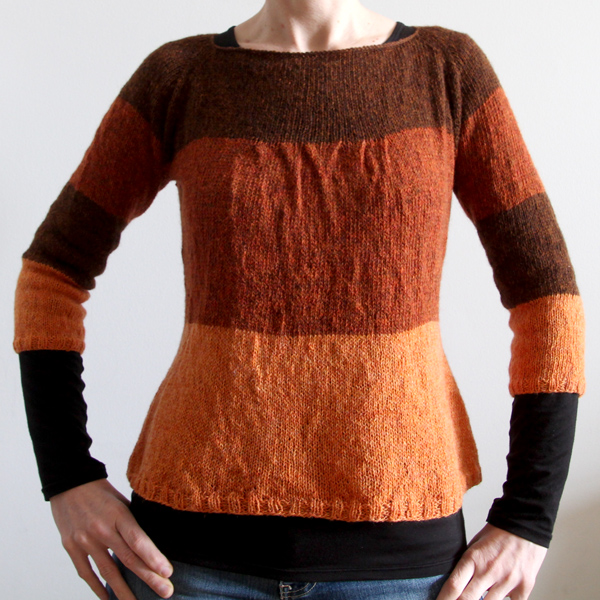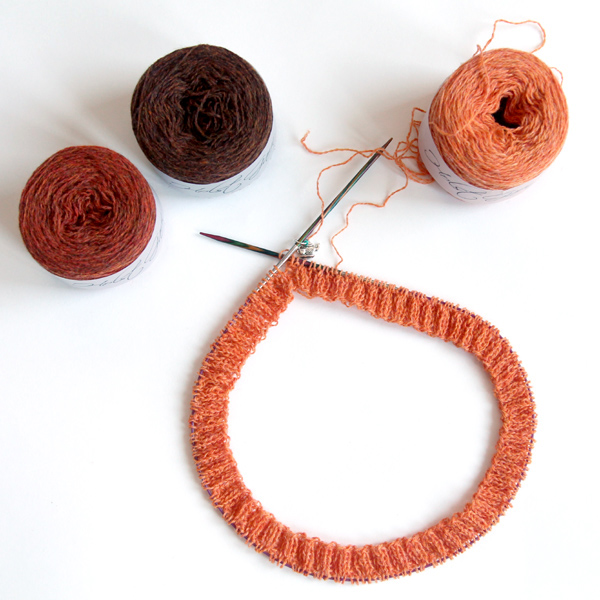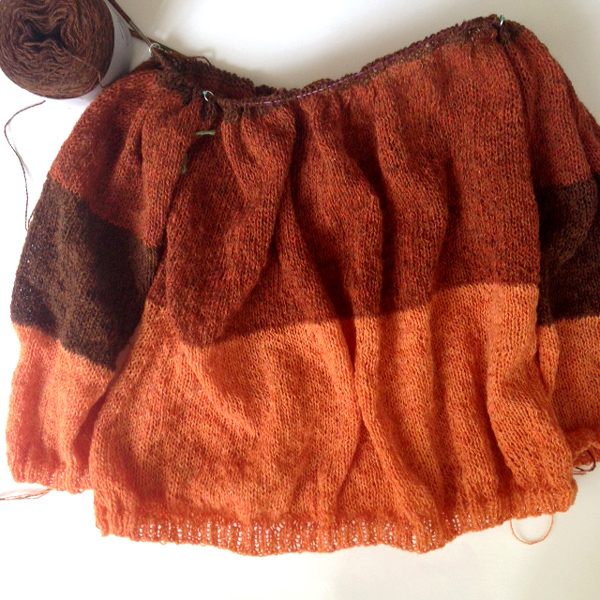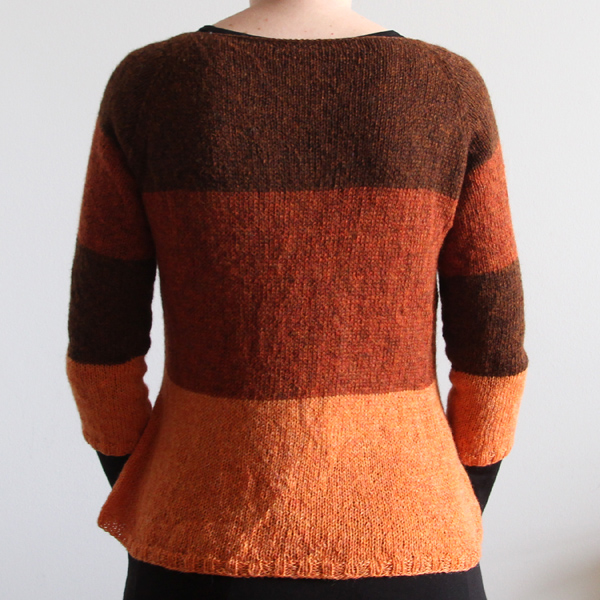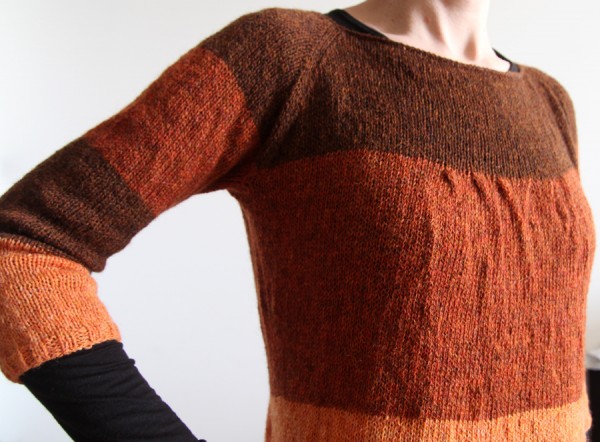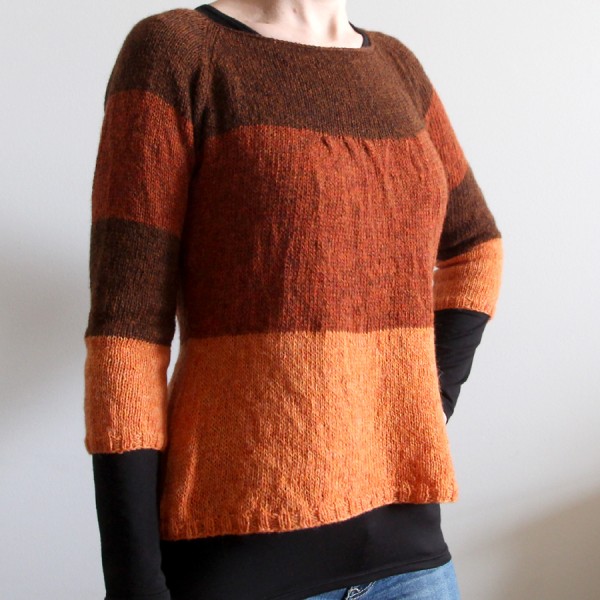 I’ve been wanting to make a pullover as the winter months loom here in Sydney so it was time to dive in to the stash.
I’ve been wanting to make a pullover as the winter months loom here in Sydney so it was time to dive in to the stash.
Yarn
I bought three 50g balls of Holst Garn Supersoft 100% uld (wool) early last year with the intention of using them together in a project because I loved the colours. However as I read about the yarn I was discouraged – people wrote that it was hard to work with because it was unwashed yarn containing spinning oil – so it sat in the yarn box and waited.
Mid-last year I read a Finnish blog post from Lankamutkalla where she had used three balls of Holst Garn to make a Folded top. I decided my yarn would be used for a top but… the yarn sat in the yarn box and waited.
A few weeks ago I reached back in to the box after I watched episodes of the Stitched in Sweden knitting podcast where Maria was using the same yarn, and a similar yarn, for tops. I went to trusty Ravelry to look for top patterns needing less than three balls of yarn and… I landed back where I was a year ago!
The pattern
I bought Veera Välimäki’s Folded pattern hoping that it would indeed work up with the small amount of yarn I had. Worked from the bottom up, I knew that I could reduce the sleeve length if I was running low on yarn.
How to combine three colours in one top?
I challenged myself to do something other than stripes so I considered the dimensions of the top, sketched, and planned for three separate colour sections – the orange at the bottom, the orange-brown in the middle, and the dark brown at the top closer to my face (I have pale skin so the lightest colour at the top could have made me look washed out).
I did the maths to section the body in to approximate thirds with colour changes at suitable locations (the waist, and just above the pleats), but as I knit I began to doubt my sleeves could match the colour blocks based on the amount of yarn left over of the orange and orange-brown.
Weighing and maths helped me to realise that I needed to include the dark brown in the sleeves, but, due to my planning, I had to include it either at the bottom of the sleeve, or in the middle, so as to keep the orange-brown flowing when the sleeves were joined.
Row gauge matters
While large portions of the pattern helpfully provided lengths for knitting, the row gauge matters when increases and decreases are made a specific number of rows apart which occurs in a few places for this pattern.
My row gauge was significantly different than the pattern called for so I had to calculate and adjust the speed of my increase/decrease rows at the waist, sleeves and yoke. It took a little bit of brain stretching but it was well worth it!
You can read helpful tips for accommodating different row gauge from:
- When row gauge matters – Knitting to Stay Sane
- Raglans and row gauge – Savannahchik knits
Overall impressions
- The texture of the Holst Garn yarn slowed my knitting down. This could be due to my choice of needles with the yarn so perhaps metal needles would have been a better choice. Despite this, I’d use it again.
- The Holst Garn yarn felt rough and scraggly straight from the ball, but, after washing, my pullover has bloomed, feels a lot softer, and will no doubt get softer after subsequent washes.
- The pattern was fairly straight-forward. There were a few sections where I had to think and count and make sure I was about to do what it wanted me to, but overall it was a simple knit.
- When I knit this pattern next time, I will knit a longer body with less stitches at the hem so it doesn’t flare as much.
- I can’t believe I have a lightweight but warm pullover that weighs just 136g!
More notes can be found on my Ravelry Tri Folded pullover project page.
